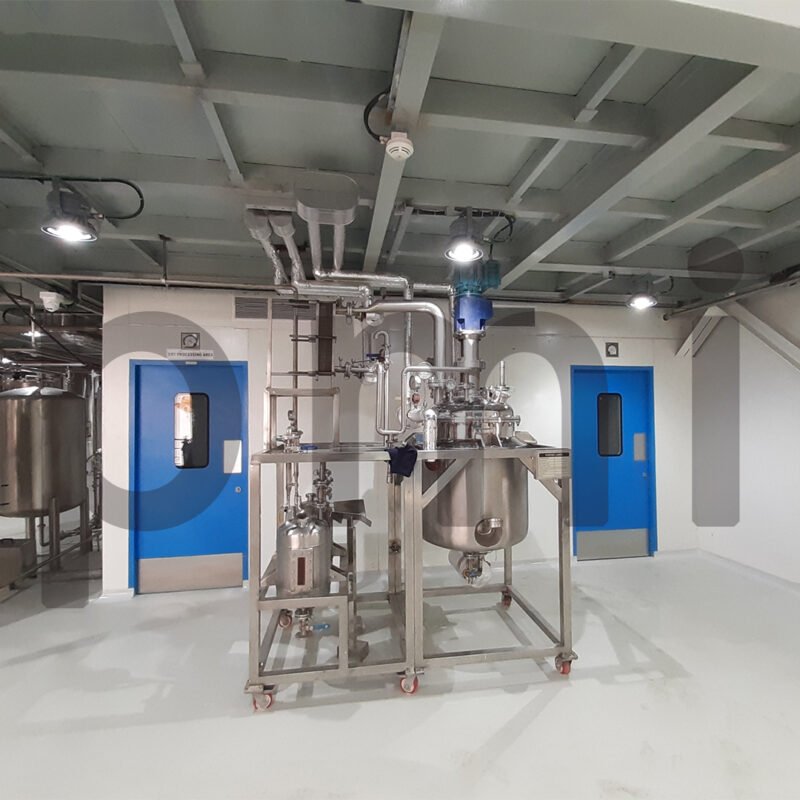Herbal Extraction Plant
Herbal extraction is a fascinating and growing field within the world of herbal medicine and the pharmaceutical industry. PM Industries, a renowned name in the manufacturing and processing sector, has taken a significant leap forward in this domain with its cutting-edge Herbal Extraction Plant.
- Guaranteed PMI quality
- Optimal performance for high-viscosity liquids
- Robust and durable design
- Perfect for thick material discharge applications
- Wide range of customizable options

Understanding Herbal Extraction Plant
A herbal extraction plant is designed to extract active compounds from herbs and plants for use in various products like medicines, supplements, cosmetics, and food. Here’s a basic understanding of how these plants work:
1. Purpose and Function
- Extraction: The main purpose is to extract beneficial compounds from plant materials. These can include essential oils, alkaloids, flavonoids, and other bioactive substances.
- Production: Extracts are used to produce concentrated forms of plant compounds, which can be standardized for consistency in products.
2. Key Processes
- Preparation: Plant materials (leaves, roots, flowers, etc.) are first cleaned and prepared. This can involve drying, grinding, or chopping the plant parts to increase surface area.
- Extraction: Different methods are used, including:
- Solvent Extraction: Using solvents like ethanol or water to dissolve and separate the desired compounds.
- Steam Distillation: Passing steam through plant material to extract essential oils.
- Cold Pressing: Physically pressing plant parts to extract oils, typically used for citrus fruits.
- CO2 Extraction: Using supercritical carbon dioxide as a solvent to obtain high-purity extracts.
- Filtration: After extraction, the mixture is filtered to remove solid residues.
- Concentration: The liquid extract might be concentrated through evaporation or other methods to achieve the desired potency.
3. Quality Control
- Standardization: Ensuring that the extract contains a consistent amount of active ingredients.
- Purity Testing: Checking for contaminants and ensuring the absence of harmful substances.
4. Applications
- Pharmaceuticals: For creating herbal medicines or supplements.
- Cosmetics: Incorporating plant extracts into skincare and beauty products.
- Food and Beverages: Using extracts for flavoring, coloring, or health benefits.
5. Environmental and Economic Considerations
- Sustainability: Efficient extraction processes that minimize waste and use resources responsibly.
- Cost: Balancing the cost of extraction with the market price of the final product.
6. Regulations and Compliance
- Standards: Compliance with health and safety regulations to ensure extracts are safe for consumption or topical use.
- Labeling: Accurate labeling of products to reflect the herbal content and any claims made
In a herbal extraction plant, the addition of liquids involves combining solvents like water, alcohol, or oils with raw plant materials to extract active compounds. These liquids help dissolve and separate valuable phytochemicals such as essential oils, alkaloids, or flavonoids. The choice of liquid and method depends on the type of plant and the desired extract, ensuring purity and concentration of the final product.
Granulation in a herbal extraction plant involves converting powdered herbal extracts into granules for easier handling, improved flow, and better dissolution properties. This process enhances the stability and uniformity of herbal products. Techniques such as wet granulation (using a binder) or dry granulation (compression) are commonly used to create granules for capsules, tablets, or bulk packaging.
Coating in a herbal extraction plant typically involves applying protective layers to equipment surfaces to prevent corrosion, contamination, and enhance cleanliness. This process ensures that the extraction machinery maintains its integrity and efficiency while processing delicate herbal compounds. Coatings also support compliance with hygiene standards, preserving the purity of the extracted herbal ingredients.
A standard herbal extraction plant is designed to extract bioactive compounds from herbs and plants using methods like solvent extraction, steam distillation, or cold pressing. The plant typically includes reactors, extractors, condensers, and filtration units. These facilities are used in pharmaceuticals, cosmetics, and nutraceuticals, ensuring high-quality herbal extracts with optimal yield and purity.
- Solvent Extraction: Uses solvents like ethanol or water to extract bioactive compounds from herbs.
- Steam Distillation: Separates essential oils from plants using steam.
- Supercritical CO2 Extraction: Uses CO2 under high pressure to extract pure compounds.
- Cold Press Extraction: Extracts oils from herbs without heat, preserving delicate compounds
APPLICATION FIELDS
Laboratory mixers are suitable for development tasks and small-scale production in, among others, the following industries:

Resins Industry

Food colors

Alkaloids

Tanning Extracts

Phyto Chemical Extraction
For more details and brochure
Let us know your requirement and we will ger back to you asap.
FEATURES
- Cutting-Edge Technology
- Research and Development
- Durable Construction
- Customizable Components
- Enhanced Maintenance Access
AREA OF APPLICATION
- Art and Decor
- Jewelry
- Furniture
- Construction
- Industrial
- Sweet Treats
- Vivid Drinks
- Snack Appeal
- Dairy Delights
- Colorful Condiments
- Selective Extraction
- Advanced Techniques
- Purity Assurance
- Efficient Processing
- Versatile Applications



